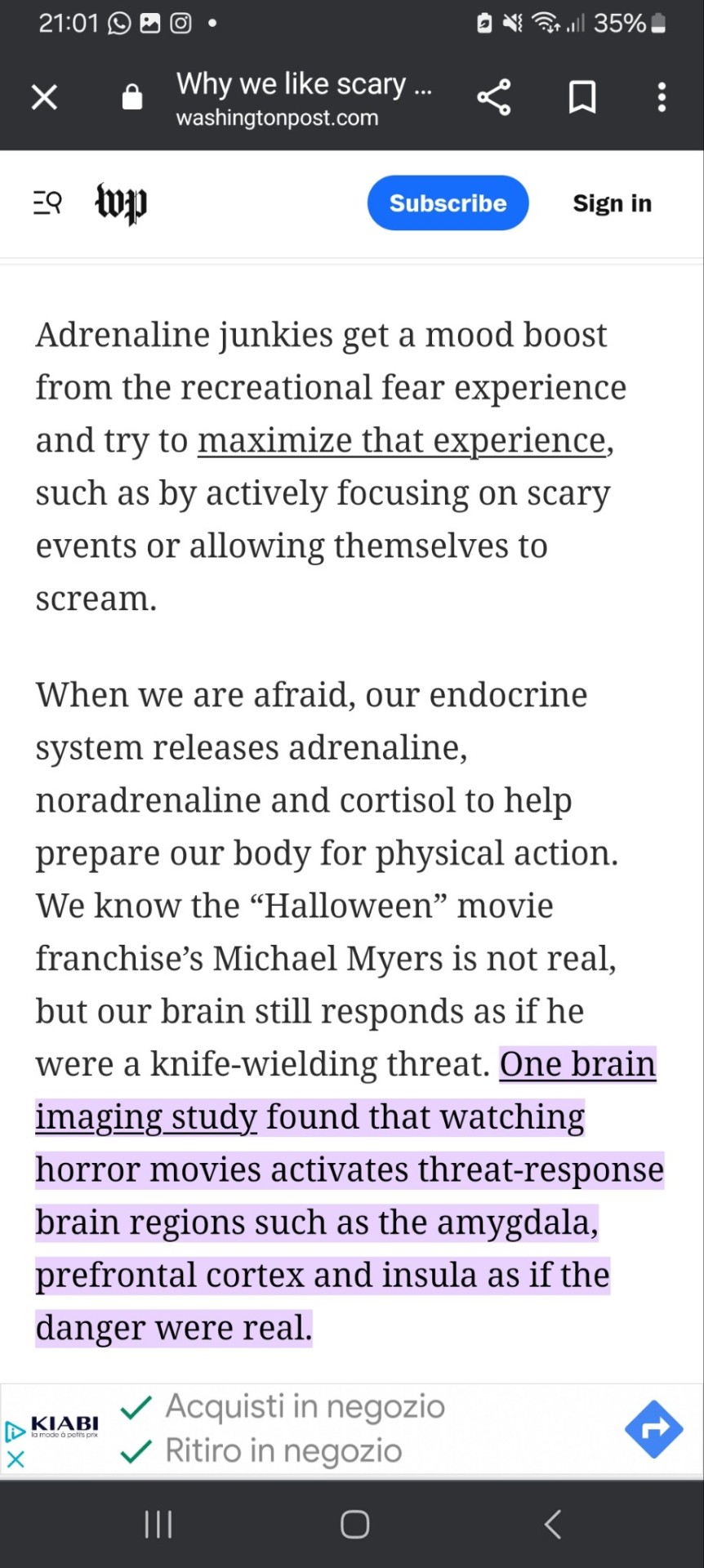#human brain
Text

A little silly fanart of Lovejoy’s Portrait of a Blank Slate MV directed by Ted Nivison (CHECK OUT HIS VLOG ABOUT IT!!!)
It’s my first time drawing something like that :D
I really wanted to include Mark, Joe and Ash, but they didn’t appear in MV that much, so I didn’t have that many references to work with
I wasn’t very proud of my art lately so it was nice to get out of my comfort zone :D
References from the MV that I used





#wilbur soot fanart#wilbur soot#lovejoy#lovejoy fanart#my art#yokiart#mcyt fanart#human skull#human heart#human skeleton#human brain#lvjy#lvjy fanart#wilbur soot lvjy#will gold#cc!wilbur#cc!wilbur fanart
646 notes
·
View notes
Text

This has probably been transcribed before but I don't know what tags to find it under, so imma just do it again cuz this kind of stuff feels very relevant to know, more evidence that Humans are weird as fuck and our brains just make shit up.
[Twitter thread by user named foone as a long image I stumbled upon on Pinterest]:
_______________________________
You want to know something about how bullshit our brains are?
OK, so there's a physical problem with out eyes: We move them in short fast bursts called "saccades", right? very quick, synchronized movements.
The only problem is: they go all blurry and useless during this
Having your vision turn into a blurry mess every time you move your eyes is obviously not a good idea, so our brains hide it from us. Now imagine you're an engineer and you have this problem
You've got some obvious solutions you could do.
make the vision go black during movement. (Some VR games do this!)
just keep showing the last thing we saw prior to movement
Both are good options with different downsides, but OH NO. this is assuming everything makes sense and is chronological and (regular) logical.
Your brain does neither of these options, really.
First, it basically puts your visual system on "pause".
You're not seeing blackness or even nothing, you're just not seeing period.
then when you finish your saccade, it shows you what you now see at the new position. and then it pretends it can time travel.
It seriously shows you the image at the new point, but time-shifts it backwards so that it seems like you were seeing it the whole time your eyes were moving.
And because your brain is not a computer with a consistent clock, this shit works.
You can see this effect happen if you watch an analog clock with a second hand.
Look away (with just your eyes, not your head), then look back to the second hand.
It'll seem like it takes longer than a second to move, then resumes moving as normal.
That's because your freaking visual system just lied to you about HOW LONG TIME IS in order to cover up the physical limitations of those chemical camera orbs you have on the front of your face.
We've known about this effect for over 100 years, it's called "Saccadic masking" and more specifically Chronostasis. Your visual system lies to you about WHEN things happen by up to half a second (!) just to avoid saccades blurring everything.
So while I firmly believe we're basically just overgrown biological computers, we're apparently computers programmed by batshit insane drunkards in Visual Basic 5.
And you might think "hey wait, wouldn't my vision 'pausing' for half a second have all kinds of weird effects on moving objects? why don't they appear to stutter when moving?"
and the answer is simple! your brain has EVEN MORE UGLY HACKS on top of this to avoid you seeing that
If you've got a clock where the second hand doesn't "tick" but instead smoothly rotates, you won't see this. Because your brain recognizes it's moving and adjusts what you see to make sure it sees the "right" thing.
It's only really obvious with periodically moving things like a clock hand, because it's not moving (so not triggering the movement-during-chronostasis hack) but it moves at a set rate, so you can notive that rate appearing to change.
It's tempting to think of your eyes and visual system as a camera just dumping a video feed into your conscious brain but taht's so very, very not the case.
What you think you see and what your eyes can actually see are two exceptionally different things.
The big obvious one being the blind spot. Vertebrate eyes are wired backwards so we've got a blind spot in each eye where the enrves enter into the eye. About 6 degrees of your vision in each eye is just not there, as there's no light sensitive cells there.
Do you see a blind spot, right now? No, you probably don't. Close one eye! There's now no way for the other eye to fill in the gaps. Still, no blind spot… Your visual system is lying, and making up content it thinks is there. You literally cannot see what you think you see.
Here's another one: You can see in color, right? (well, some of you can't. Sorry)
You can see in color all throughout your vision, it's color everywhere?
Well, most of the cone cells (Which are sensitive to color) are in the fovea, a little spot in the center of your vision.
So outside of that center-of-vision spot, you have very little color perception. There's some but it's very limited compared to your main color vision.
But I bet if you shift your attention to your peripheral vision right now, it's in color.
Your vision system is lying. It's remembering what colors things are and guessing and filling in the gaps. It's basically doing a Ted Turner colorization process on your non-central vision.
There's even weird effects like what's called "Action-specific perception". If you get a bunch of white balls of various sizes and toss them at people then ask them to estimate the size of the balls thrown at them, they'll have a certain size estimate, right?
Now repeat the experiment but ask them to try to hit the balls back with a bat, and suddenly all the estimates shift larger.
They actually see the ball as bigger because they need to hit it. Their vision is exaggerating it to make it easier to see!
Which just goes to show, like I said, your vision is not a camera. Perfect accuracy is not one of its goals. It does not give any shits about "objective reality", that's not important.
What's important to the evolution of the visual system is any trick that helps you survive, no matter how "dumb" or "weird" it is.
So if you want an accurate visual representation of what things look like? Use a camera. Not your eyes.
In any case the original point was that while you might know this about your eyes being poor cameras that lie to you, you might still think that at least they're consistent, time-wise. They don't screw with your sense of time passing, just to make up for visual defects. NOPE!
If you can't get it don in time, turn back the clock and pretend you did. That's a perfectly good solution when you're the visual system.
BTW @/hierarchon reminded me of a neat trick with saccadic masking: go look in a hand mirror. No matter how close you bring it to your eyes, and how much you look around, you will never see your eyes move.
You're blind during those movements. But you still think you are seeing.
She additionally pointed out that your phone's selfie-mode is NOT a mirror, and it has a slight delaye, so you can see your eyes moving in it.
And for fun, here's wikipedia's example of the blindspot.
Stare at L with only your left eye, adjust the distance, and the R will disappear. You don't see "nothing" or "black", you see the background, because you expect to.
This is why laser damage your retina can be so insidious. Your visual system already can hide "holes" in your vision, what's one more to hid? So you damage a small spot of your retina and your visual system covers it up.
But since you didn't go "WELL THAT WAS TERRIBLE I BETTER TAKE BETTER CARE OF MY EYES" and stop fucking with lasers, you keep doing it.
Eventually you accumulate so much damage that your visual system simply cannot manage hiding it all and your vision rapidly degrades.
The other reason lasers are so dangerous is that they don't necessarily trigger the same responses as regular incoherent light. Your pupil reflex is only triggered by some special cells in the center of your eye, so an off-center laser might not cause your iris to contract.
And infrared laser light is just as dangerous as visible laser light, but can't trigger your blink reflex. Your eyes automatically close when exposed to bright light, but they can't detect infrared light. Despite not seeing it, it still causes damage.
Anyway, back on how amazing and crazy your vision is:
There was an experiment back in 1890 where someone wore glasses made with mirrors in them to flip their vision.
After about 8 days, they could see just fine with them on. Their vision system had started "flipping" the image.
(I say flipping in quotes because it's not as simple as it started showing the pixels at the top row on the bottom row, cause our vision doesn't work like that)
It only took them a few hours to get back to normal after taking these glasses off, though.
The last really fun part about this flipping experiment: your eyes already do it. Based on how our vision is wired, we should be seeing everything upside down.
We don't, but only because our visual system has had a whole life to adapt to this.
BTW, since a few people have brought it up: There's a great sci-fi novel by Peter Watts called Blindsight. In it humans encounter an an alien race they call Scramblers, who can move very fast and precisely, and they exploit saccades.
Because if they only move during saccades, we never see them moving. And since so much of our vision is based on just filling in what we think is there, if they stay out of the direct center of our vision, we'll just visually fill them in, like they were never there.
Check it out if you're into hard SF stories of first contact. It's got some really neat ideas about human vision, very unique aliens, the future of humanity in the face of perfect VR, and vampires.
(Really, it has "vampires", while still being hard-SF)
BTW, remember how I said "vertebrate eyes" up there?
Guess who has eyes which are wired forwards instead of backwards (have no blindspot), have an internal lens, and can even see polarization of light? Our good friends the Cephalopods!
#long reads#long post#not mine#humans are weird#human biology#human brain#the brain lies#human eyes#vision#sight#science is magic#stupid brain#objective reality#apparently our eyes/brain doesn't care about that thing#what a nuisance
237 notes
·
View notes
Text
YOOOOO 2 more fun shirts this morning


I love how the brain turned out! Kinda make me inspired to draw an oc….
Also can’t go wrong with vorhees
160 notes
·
View notes
Text

Hypervigilance
#brain stuff#human brain#eyes#eyestrain#mental state#mental health#dark surreal art#sketchbook#sketches#traditional drawing#dark surrealism#dark art#traditional sketch#my artwork#my drawings#artists on tumblr#illustrators on tumblr#support human artists#might translate this one into a painting
73 notes
·
View notes
Text
You cannot "kill" religion

I want to talk about one thing, that often gets lost.
A while ago I spoke about how even in a Solarpunk world, there would be religious diversity. Which is something I stand by and at least here there was not much in terms of arguments about it. Though I had a lot of arguments about it in other forums. Because... Well, religion is a sore topic for a lot of people. Which I understand. Of course I do. I was abused in the name of religion for most of my childhood and youth. So I get it. I had that time myself. The edgy atheist phase in my 20s, where I would get super angry about anything religious.
But by now I have calmed down a lot about it. I can see that religion is not inherently evil, even though it has been used to justify a lot of evil. And yes, that is true for most of the world religions at least.
It was that, that kept me on the anti-religion train for so long, really. Because being LGBTQ* I obviously am so easily the victim of all the evil justified by religion. But at some point I realized, that literally any frame of mind can be used for evil. Science has been used for lots of evil. And with that I do not just mean that science found ways to do evil, but that it has been used to justify evil. Science has been used to justify racism, sexism and eugenics.
Because the truth is, that humans who want to do evil will just find a tool to justify it.
No, but the thing I want to talk about here is this idea that if people were just all efficiently scientifically literate religion would just die out. Or, alternatively, the idea that we could just forbid religion in any way or form and it would be gone.
When it comes to the first thing, I would say: That is in fact an unscientific claim. To the second I would say: History wants to differ.
Let me make one thing clear: Our human brains are kinda just wired for religion. Our brains have just a couple of traits, that makes it likely for us to become religious or at least supersticious in one way or another.
Like the fact, that we are super wired for seeing someone else's intent. Because we are this super social animal species. But we got so good with this, that our brains kinda just see intent in anything. Like, we will look at those wire connected headphones knotted up and think: "Why are you doing this again?!" While of course the headphones are not intent on this. Because they are just things.
As such we have just a tendency to see a spirit or character in every object. Which is how spiritual believes arrive. Giving each tree, stone and animal some sort of spirit.
It is just what our brains do.
The other thing our brains are kinda hardwired for is pattern recognition. Which leads us to see patterns even if there are none. You hunted a deer and just after that it rained? Twice? Trice even? Oh boy, there is a pattern here. The gods give you rain for sacrificing that deer boy.
Just as we are hardwired to kinda associate "vibes" with objects or places based on what might have happened there. There is absolutely no reason to not live in a place where a murder had happened. But even some of the people who think themselves as super rational will just not... want that.
And we see this going on. While scientists are less likely to be religious than the general populus, there is still a plenthora of religious scientists. Who are not worse scientists because of it. Because here is the other thing: Religion give us something to hold onto.
To believe in a higher power who has a plan for you is soothing to many. Just as it is soothing to believe that dead souls move onto something after death. Both because it helps us deal with the idea of dying one day, but also when it comes to dealing with the death of loved ones.
And that is... okay. Really. In by itself it is okay.
And then there is the history of course. See, I decided to put a Torii up there, because oh boy, the Buddhist folks trying to get the religion to spread in Japan tried a lot to suppress the indigenous believes, that later turned into Shinto. And... Well, they did not manage, did they?
But the same can be said for so many other religions. Be it how the Christians stayed around through Roman persecution. Or how there are still Jewish people, even though they have been persecuted for literal millennia.
Even some of those religions we consider extinct are not really. They have just changed and merged into other religions, that have come along.
I mean, just as the Romans tried to get those Christians to stop being Christians, the Christians in turn tried to extinguish so, so, sooooooo many other religions. But it turns out that a lot of them are still around. At times somehow merged into Christianity. But... They are still there.
And really... I do think hating on religion as a general concept is just a wasted emotional effort. You do not need to believe all of those religious things. But... You will not forbid it. So the constructive thing would be to try and find a way to shift religion in a way, that people who believe it are less likely to fall for people preaching hate. To teach people to be able to read those scriptures in context and be critical of those using it to inspire hate.

79 notes
·
View notes
Text
There is a quote from none other than Alice in Wonderland that goes, "I can't go back to yesterday because I was a different person then," and that got me thinking; isn't that only reason people want to go back and change things? Because they are different people now, and will make different decisions? How amazing is it that people can experience hindsight? How amazing is it that the human brain is ever evolving to the point where we can think of a whole new reality based off of a single decision? How amazing is it that we can become entirely different people after the reading of one novel, or the listening to one story? How amazing is the human brain that can feel regret because it has grown?
#thoughts#thought provoking#my thoughts#alice in wonderland#lewis carroll#shower thoughts#deep thoughts#deep quotes#human#human brain#human behaviour#emotional intelligence#pychology#interesting#regret#hindsight#trash rambles#crack
23 notes
·
View notes
Text

“Even a slight ability to change oneself is more valuable than any power over the external universe. Metamorphosis is an exercise in willed restructuring of the mind.”
― Peter J. Carroll, Liber Null & Psychonaut: An Introduction to Chaos Magic
Yes, this is a slice of human brain...
#brain#mind#human brain#obscurities#curiosities#rarities#dark interiors#cabinet of curiosities#goth aesthetic#the dusty cat#dead things#macabre#creepy#chaos magick#Peter J. Carroll#Peter Carroll#metamorphosis#chaos magic#esoteric#occult#magick
40 notes
·
View notes
Text
brain
worms
brain. worms.
brain worms
brainworms
Brainworms
Brainworms.
Brainworms!
BRAINWORMS!
BRAINWORMS!!!
BRAINWORMS!!!!!!!!!!
BRAINWOOOOOOOORMS!!!!!!!!!!!!!!!!!!
B̴̡̨̛̖͉̜̙͉͈̥͎̣̤͉̻̝̹̖͖̗̳̟͚̙̳͙͇͓̮̑̇̓͊̾͐̇͆̏̐̋̅̈́͋̔̋̿̓̇͌̽̓̆͗̀́̆̚͘͜͝͝R̴͇̘̖̗̐͆̎͗̅̃̿͐͛̄̈̇͊̾̒̐̐̀́͊̎̋̑̋͝͝͝Å̴̧̧̦̗͈̰͇̞̟̪͎̞̣̮̲̤̹̖͔͚̼͇̠̙̹̙̖̔̾̈́̈̎̀̒̔̀̓̓͌̉̄̌̈̊̀͜͜͝ͅA̷̛̻̙̳͒̾́̈́͂̀̈́̑́̎̋͋́̏̈́̂̄͆̍̿̿̇͊̿̾̏̎̊̏͘̚̚͝͝Ą̷̪̖̯̯͉̠̗̲͔͔̺̳͖̟̹̲̲̩͎͈̈́̒̑̈́̾̊̍͌̐̈́͛͛͂́̄̆͒̓̉̑̃́́̈́̒̎̚͜͜͜͝Ȧ̷̡̡̜͈͈͍͊̓̂̌̀̔̒͗͑͒͗̓͌́̑̈́̋́̿͌̿͘͘͘͜Ị̴̧̡̨̦̫̺̮͔͙̲̫͕̗̱̙̠̫̣̑Į̸̛̦̝̬̰̗͎̠͎̹͓̤̣̞͖͉͓͉̼̝̣̺̜̦͚̠̘̜̠̞̟̰̯͖̎͗́̍̒́͒̍̋̈́̊͌̉̂́̈̀̑̽̈́̑̑̚͜͠͠͝͠I̷̫̺̰̫̩̰̺̹͍̲͎͓̞̖͈̬̹̭̖͐̓̾̂͒͊̔̋̄̂̄̅͛̈́͌̐̿́͐̕͘͜͝͝͝Į̵̭͍̗̙̳̱̜̮̠̇̿̒̑́̈́̓͐͊́̑̊̉̀̇͗̈́̂̉͌͊͌͌̑̿̆͘̚͠͝͠͝ͅÎ̸̧̢̢̛̭̳̤̗̞͚͕̫̙̗͎̜̪̝͔̤̤̼̅̈́̆̓̔̀̐͒̌̆̄̓̈́͛̋̇͋̽͗̀͐̌́̎̎̂̔̂͗̚͝͠N̸̡̧͕͚̠͖̩̪̩͈̬̳̱̼̱̹̖̠͖̳̥̤̬̮̟̰̝̮̗̰̹̦͉͙̬͍̐͜W̶̧̨̻̥̝͔̪̳͈͈̝̥͔̜̪͈̤͈͕͙̳͚̣̥͙̠̅̂͋̅͒̀̀̆͜͜Ơ̷̛̛̝̮̥͕͓̖̭̜͎̰͉̘̘͕͖̲̘̺̼̱̤̳̅̅͑̋̔̔̀̈́̾͂̽͑͐̆̾̓̀͛̉̑̄͘͘͝Ơ̷̢̧̝̫͉̰͓͚̯̦̻̯̣̬̤͎̙͚̥̭̗̭̘̗̋̃̆͛̋̋͐̒̒̇̍̓̂̎͆̍̎̇͛̈̑́̑̑͗̑̓̎́͗̅́̔̑̕̕̚͜͝͝͝͝ͅÒ̶̪̬̼̒̓͊̈́͗̐̾͑̔̿̆́͐̋͂́̎̓̋̇̎̂̌́́̒͒͐͛̀̅̚͠͝͠͝Ơ̴̡̢̨̛̛̖̭̱̹̲͚̘̳͇͕̤̺̮͚̮̟̪̤̖̮̩̹̜̯͐͒̀͆̍̿́͑̉̿͊̌̈́̊̿̈́͌̏͒̽̐̐̉̓̊̾̑̋́̊̕͜͠͝͝͠ͅƠ̸͎̒̋͋́̓̈́͌͋͂̉̿̒̎͑̐͋̓̍̎̄̀̅̒̇͒̏̀̽͊̚̕͘͝Ǫ̵̛̖͕͓̻͕̟̖̺̠̹̝̒̓̃̓̓͒͊͆̉͐̋̍͂͂̓̓͆̓̌͑̑̔̈́͂̂͛̒̍̒͋̋̕͠͝͝Ở̷̧̢̢̛̭̦͎̣͍̱̜̯͚̗̣̩̠͍̙͙̻̟̤̙͚̠̥̤̫̪͙̖͓̪̲̙͌̇̐̽͊̂̍̾͌̐̈̿̇̚͘͝͠R̵̛̛̩̖̠̀̓̄͆̑̄̀̈́̋͒̉̈͊̊̾̊͛͌͌̽̋͘̕͝͝͠͝M̴̯̦̟͖͇̼̜̫̦̤̠͙̊̆͂̏̔͌͌͋̓̏͊̌̂̿͋̋̈́̽̌̃̃̊͆̍̋͌̅̏̕̚͘͜͝͝Ş̶̨̢̱̝̻̝̠͖̫̪͓̙̲̤̲̘̯̣̟͌͜͜ͅ!̸̨̨̡̢̢̨̺̜̲̦̟͍͙̖͚̜̤͔̼̮̱̯͙͖͑͒̿͐̈́̿̒̿͊̇̒̈̓̅̏̾͂̿͑͌̃̿̓̅͂̍̃͘͜͝͝͝ͅ!̵̘̜̗̙̙̥̺̔̒̀̉̇̅̓̈́̈́͊̐̓̃̈́̔͛́͋́̏̀̆̿̓̑̿́̔̏̽̽̕͝͠͝!̸̨̢̪̝̣̰͎̥͈̰̭̻̼̟̳͎͊̿́͝ͅ!̶̧̡̡̡̨͍̣̲̟̲͖̣̣͓̬̙̥̜̗̖̫̝̞͚̫͕̹̣̣̣̲̼͔̣͖̼̟̈́̽̆͒́͛̌͆́̊́̓͒̿̃̐͗̌͛̇̐̏̅̓͛͂̚͘͜͝͠͠!̷̧̢̛̯͕̰̖̮͙̞͕̮̙̯̫̺͓̯̉̑͊̇̿̀̿̒͑̑̀́͗̒̽̌͊͒̽͑͂͗̇́̎̈́͗̏̌̐̈́́̊͘̕̚͜͝͝!̶̺͈͑̓̏̈̏̿̔͋̅͛͐̾̽̔́̑̅̋̍͊͛̒̎̔̆̈̚̕̕̕͝͝͠͝͝!̷̧̛͈̦̰̹̺̯͔̮̜͈̭̜̗͖̪̦̾̉̈́̈́̓͛͐̒͑̊̔̑̓͒̀̈́̓̂̇́̂!̸̙͍̬͒̃̃̈́̉̉͑̆͗͋͒̄̍̎̾̒̓̋̚̚͝!̵̡̰͉̙͍͍̉̓̌̍͛͐͛̂̽͂́̕͠͝!̸̥̤͈͓̥͔̪̜͎̰͒̔̑̂̒̔̋͊͑̔͋͛͋͆̃̈̾̄̂̀̕̚͝͠͠!̸̧̡̧̞͖̮̰̗̬͉͎̘͈͉̙̰̼̜̹̥͖͉͖̪̦̣̲̳̫̃̍̈͌̓̈́̀̉́͗̐͋̏̽̇͌̅̃̽͛̊̔̎́͑̌̒̽̊̉̑͋̓͂̿͛͘͘̕͜͝!̵̧̧̲͓̙̱̹͚̠͓̙̥̯̲̫͖͔͕̲͖̩̝̣̞̙̫̝͎͉͉̟̔̃̊̈́́̈̑̆͊̄̓̂̿̋̕͘̕ͅͅͅͅͅ!̸̧̼̻͙̲̘̲̣̰̦̤̰̹̙͙̟̥̠̪̠͛̇̓̈̃̀̎̾̕͝!̷̪̮̪͇͇̙͚́͂̒͊̀̆͗̈́̍͛̅̓͑̌͒̿̅̏͂͒̍̅̆͆͑͘͘͝͝͠͠!̶̢̛͕̦̬̙̎̿͊̈́̑͐̿̑̎̽͌͑̈̒͛̍͗̀̍͗́̒͛̓̈́̇̚̚̚͠͠͠!̵̧̡̧̡̡̢̼̩̖͚͉̘̦̮̝͕̲͙̳̖̪̝̼̺͕͚͈͓̳̝͖͎͚͉̫̀̊͂̔͐̏̅̋̈́͑̽̈͑̿̒̈̆͘͝͝!̷̨̨̧̧̝̘̤̤̥̤̬͍͖̲̬̘̜̥͖̬͖̯̤͈͖͚̫̱͈̖̘͖͓͕͕̣̝́̈̀͌̇̀͒́̊̈͂̓̀̈́̓̆̾͗͂͆͌̇̒̓͌́̌̉́̏̈͆̊͛̚͘͜͝͠͝͠ͅͅ!̸̨̱̥͇̤͖̳̤̗̞͚̺̳̇̎̉̇̎́̿̋̀̑̊̏͋̀̃̈͂̔̅̽̈́̃̐͗̌́́̋̑̾͛̐̚̕̕͠͝͝͝ͅ!̷̨̨̛͙̪̙̠̖͍͇̰̱̯̖̘͖̬͇̬̟̜̬͎̓͌́̿̔̌͐͗͒̇̈͆̋̔̀̃̑̿̉̑̂͒͗̐̂̓̚͜͠!̶̨̟͔͇̜͉̄̐̒́̈̑̌̀͠ͅ!̴̙͉͉̯̥͚̹̞̘͇̳̼͕̟͈̺̺̬͕̣̩͖̣̼̼̪̻̳͚̯̗̖͆̇̋̆̿̐̈́͗̑͛̂͑̓̏̾̐̐͒̑̃̉̄͘͠ͅ!̵̨̢̧̛̛̬̲̣̱̻̘͎͓͉̦͚̤͈̤̖̭͓̙̤͕̣͉̤͌̾̇͌̇̈́͛̄̑͐̈̐̈́̌̿͋͒̇̅̿̌̃̿̅̊̿̿̎̃͆͐̆͊̚̕̕͘͠͝!̴̫̹̬͓̄̍̿̅̉̿͌̄̾̕!̷̦͖̦̆̿̾̈́̄́̿̈́̕!̵̧̛͓͖̦͎̮̝̬̻̹͖̂̇̓́͊͋̓̄̊̅͒̓͗̔͆̋̾̈̍̏̊͂͋̆͗̇̋́̑͑̈́̈̂̈́̐̚̕̕͝͝͝͝!̴̢̢̥̻̬͈̫̩̰͙̠̹̳͈͖̜̮͎̼͉͕̫̩̠̜͖̂͑̊͌̀̽̇͋̌̑̏͘͘͝ͅͅ!̷̧̗̩̳̭̳̣̣̫̜̻͕͓̫͙͎͎̥̘͍͓̥̜̮̲̙͉̰̃́͑̈́̄́̉̈́̐͌̒̈́̑͛̑̾̓͂̾̎̿̆͒̀́̐̉̒̚̕͝͝͝͝!̸̢̥̱͍͕̲̩̥͍̞̦̩̤̩̲͖̹̘̣̻̰͉͔́͗̐͑̈̄͂̂̊̉̈̃͋͋̀̎̈́̎̿͛̏͂̿̓̑͛́͋̾̍͠͝͝!̴̳̲̘̥̀̎̐̀̇̔̒̉̂͗̀́̓͆͒̑̎͂̑͗͐͊̏͆̂̂̋̋̌͘̚̚͝ͅ
#dougie rambles#personal stuff#my poor attempt at a joke#no context#what#nightmare fuel#unreality#fortunately#brain worms#brain#worms#human brain#this sounded funnier in my head#i am so sorry#shitpost#vagueness#government cheese#meltdown#breakdown#the horrors#terrors
13 notes
·
View notes
Text
Some interesting facts about the relationship between the human brain and fiction
Why do we love movies so much

Why are we drawn to fictional characters. This ties in with the first point.

Why do we love horror movies so much. I think this can apply to action movies as well.


https://www.washingtonpost.com/wellness/2022/10/27/why-we-like-scary-things/
Why do we love violent video games so much


PS: No, playing violent video games won't necessarily make you violent

Why do some of us love fictional villains? Research has shown that non-moral factors can drive viewers to like a certain FICTIONAL character, even if it's a villain. So no, liking a villain is not the same as condoning their actions.
I hope this information was useful to you. ❤️
10 notes
·
View notes
Text
By: Christina Buttons
Published: Apr 7, 2023
Why do progressives and gender activists fervently believe that “transgender” women are literally women? Why do they believe in the existence of “transgender children” that must be medically transitioned to avoid going through the “wrong puberty”? Why is “gender identity” taking precedence over biological sex in legislation like Title IX? How can they confidently assert that “the science” is on their side?
The answer to all of these questions is due to the belief that being transgender is an innate biological property of human beings. The notion that “gender identity” is brain-based and innate has captured the political left. This is due to a collection of brain studies that purport to show that people who identify as transgender have brain structures that are more similar to the sex with which they “identify” than to their actual sex. Widespread media coverage of these studies lauds them as “proof” that transgender people “are who they say they are.”
Progressive media outlets have glommed onto this narrative and published dozens of articles asserting that “transgender people are born that way” and that “science proves trans people aren’t making it up.” Mainstream media like CNN, the New York Times, Newsweek, the Telegraph and scientific sources like Nature, National Geographic, the Cleveland Clinic and Scientific American have also repeated this misinformation.
To make matters worse, the “brain sex” conjecture is baked into clinical guidelines for medical transition and legislation for employment, healthcare, and education.
The transgender “brain sex” argument is a load-bearing pillar supporting the belief that people are born transgender and should therefore medically transition as early as possible. Several female detransitioners who were medically transitioned as minors have even discussed how their doctors wrongly informed them that they possessed "a male brain in a female body." This claim is so absurd you’d wonder how the average person, let alone a medical doctor, would believe it.
One major player responsible for perpetuating this myth is Dr. Joshua Safer, an endocrinologist and the executive director of the Mount Sinai Center for Transgender Medicine and Surgery in New York City. Safer is a leading advocate of "gender affirming care" and believes that "gender identity" is biologically determined. A review article he published on the topic relies heavily on brain studies and disorders of sexual development (which are often used to argue that the sex binary should be represented as a spectrum).
A 2016 interview with WBUR gives insights into how the “brain sex” theory shifted Safer’s perspective of the transgender experience from a mental health issue to a medical one.
"Up until a decade or so ago, the view among many providers was that this was probably a mental disorder and the fear was that doing hormone therapy or doing surgery might be abetting a mental disorder and the correct intervention would be to counsel people," Safer said.
But Safer's research traces the increasing evidence that gender identity is rooted in biology, "which makes it so logical that an option for people in 2016 is to change the external appearance to meet that gender identity," he said.
Why does it matter? Because Dr. Safer is currently the co-chair of the World Professional Association for Transgender Health (WPATH) and has been involved with the organization for many years, including serving as the first president of USPATH, the United States affiliate of WPATH. Most importantly, he co-authored two sets of clinical guidelines for the medical care of transgender patients: the WPATH's Standards of Care and the Endocrine Society guidelines. These guidelines are considered the gold standard in gender medicine and are used by gender clinics worldwide.
Dr. Safer has testified in numerous legal cases related to "transgender rights," providing expert testimony on the purportedly scientific aspects of “gender identity,” particularly as it relates to "brain sex." He appeared on a panel with comedian Jon Stewart last year and has discussed the concept of "brain sex" in various media outlets, including the New York Times and a PBS documentary.
The assumption that being transgender is an innate property that can be detected by brain scans is central to all of the problems we see today surrounding transgender issues. It is therefore crucial to be aware of and challenge the transgender “brain sex” argument whenever it arises.
The “brain sex” argument
The “brain sex” argument claims that transgender people have regions in the brain that structurally resemble that of the opposite sex. This assertion is based on a number of studies conducted in recent years on people who identify as transgender to gain insight into the potential biological basis of their condition. Some studies have even purported to show that the brain structure of transgender individuals more closely resembles the sex they “identify” as than their natal sex.
The "brain sex" argument is based on the idea that there are differences in brain structure and function between males and females that are influenced by hormones and genetic factors. Advocates of this argument argue that these differences can also be seen in the brains of transgender individuals and that these differences may contribute to the development of a “gender identity” that is different from their natal sex. They believe that a biological male who identifies as a woman has brain structures that more closely resemble that of typical females, and vice versa.
Here’s why it's wrong
The majority of the studies on the “transgender brain” have a fatal flaw: they didn’t control for confounding variables like cross-sex hormone use and, most importantly, sexual orientation. When a study doesn't control for confounding variables, it means that the researchers did not take into account other factors that could have affected the results of the study, which make it difficult or impossible to determine whether the relationship between the two variables being studied is truly causal or a byproduct of other unrelated factors.
Cross-sex hormone use can have effects on the brain, including changes in brain structure and function. But more importantly, many trans-identifying individuals are same-sex attracted, so the research on the “transgender brain” claiming to find structural regions that resemble the opposite sex are essentially rediscovering findings on the “gay brain” and reinterpreting the results to fit their preferred conclusion.
In the early nineties, neuroscientist and author Simon LeVay made the breakthrough discovery that the brains of homosexuals had structural differences that resembled that of straight members of the opposite sex. So it seems that while undertaking the hunt for the “transgender brain,” researchers have forgotten all about the discoveries made about the brains of same-sex attracted people.
The first “brain sex” study that did take into account the participants' sexual orientation found that the brains of transgender individuals were similar to those of people of the same birth sex rather than the opposite sex.
When researchers scan the brains of heterosexual people who identify as transgender, they also find they are typical for their natal sex. Samuel Stagg, a U.K.-based Ph.D. student of neuroimmunology, explains: “The homosexual sub-group show brains skewed along the male-female dimension. However, this is predominantly due to their co-occurring homosexuality. When we scan the brains of the heterosexual type, we find they are more typical for their natal sex.”
“Gender identity” not gender dysphoria
Gender dysphoria, like other psychiatric conditions, may have some biological underpinnings. There are traits like neuroticism that can predispose people to psychiatric conditions and research suggests that neuroticism has a strong biological basis with both genetic and environmental factors contributing to its development.
But gender activists are not concerned with gender dysphoria, rather they aim to establish a biological basis for being transgender that ceases to categorize it as a mental illness. Activists have pushed for a more “inclusive” definition of what it means to be transgender that seeks to reduce stigma and perceived barriers to medical transition services.
After the legalization of same-sex marriage in 2015, civil rights and gay rights organizations that may have otherwise had to shutter their doors pivoted to championing “trans rights.” The success of the "born this way" campaign in promoting the idea that sexual orientation is an innate, immutable aspect of identity has prompted activists to also present being transgender as innate and immutable.
Manhattan Institute fellow Leor Sapir wrote his Ph.D. dissertation on the rapid proliferation of the “transgender rights movement” and its efforts to obtain civil rights jurisprudence for “gender identity.” To this end, they have attempted to prove that “gender identity” is an innate, immutable trait called “neurological sex” or “brain sex,” which they say should override natal sex.
“In the American civil rights tradition, if you can convince a judge that being transgender is like being black, then you can tap into this entire body of judicial precedent and civil rights laws that immediately applies and gives you all the policies you want,” Sapir told me. Leor Sapir has written a number of important articles on this topic for City Journal, be sure to read them for further understanding.
More context: the trans community is divided
Interestingly, on the surface the transgender community presents as a unified front, but in reality it is divided into opposing philosophical factions: those propelled by civil rights organizations who seek to prove that being transgender is an “innate, immutable trait” for political and legal reasons, and the queer theorists who question the basis of scientific authority.
Last December, a transgender rights organization announced they were publishing a “groundbreaking article” that claims “being trans is a biological condition.” But after hundreds of critical comments from transgender people claiming that the search to find a biological basis for being transgender could be exploited, citing “eugenics” as a top concern, the organization spiked the article and issued an apology.
A self-described queer theorist named Eirnin who had early access to the article said it was not peer-reviewed nor written by an expert in the field but was merely a short letter that combined several theories of “brain sex” based on “debunked science.”
Another key point
If “gender identity” were solely biologically ingrained, it would conflict with the fact that gender dysphoria has been observed to resolve spontaneously or through psychotherapy at various ages. As we know from the growing population of detransitioners and a large body of research on desistance in children, transgender identities are not necessarily fixed. Currently, there is no brain, blood, or other objective test that distinguishes a trans-identified from a non-trans identified person.
Group project
This article is intentionally simplified to convey the main points effectively. It is my hope that it will assist individuals in countering the transgender "brain sex" argument when they encounter it. However, I am collaborating with neuroscientist Sammy Stagg on a group project to publish a paper that highlights the methodological flaws present in current "brain sex" research in a more comprehensive way.
==
But wait, we were told that "gender is a social construct," and that "gender is fluid" and "separate from biology." God is real but undetectable, good but mysterious, all-loving but tortures for eternity.
If even they can't make up their minds, how is anyone else supposed to accept their claims?

"People should be able to be trans just because they want to be, regardless of whether they 'biologically' are."
It should come as no surprise that well known anti-gay hate preacher, homophobe and child mutilation enthusiast Colin "Katy" Montgomerie is opposed to anything that would constrain the assertions and demands of the fantasists to objective reality.
Reminder again, the activists removed gender dysphoria from the definition so they could use the term for queer theory activism.
https://www.hrc.org/resources/glossary-of-terms
Transgender | An umbrella term for people whose gender identity and/or expression is different from cultural expectations based on the sex they were assigned at birth.
https://www.stonewall.org.uk/list-lgbtq-terms
Trans | An umbrella term to describe people whose gender is not the same as, or does not sit comfortably with, the sex they were assigned at birth.
I don't know what else I can do to demonstrate this is ideological and political, aimed at reordering society around the principles of Queer Theory, and not about helping people whose quality of life is impacted by a disorder. Especially since they've already been erased.
#Christina Buttons#brain sex#human biology#human brain#neuroscience#neurobiology#female brain#male brain#trans brain#gay brain#gender ideology#genderwang#queer theory#biology denial#religion is a mental illness
38 notes
·
View notes
Note
Favorite fun fact about our brain? :D
(Panics) I don’t know if I have a favourite fun fact about our brain, however I do think the human brain is incredibly cool. Psychology is just in general super interesting to me.
And I think I’m absolutely gonna delve deeper into it you know.
I do think it’s interesting that our brain can repress memories as a sort of defence mechanism.
But as simple as it is, what might be my favourite is that we are using our brains all the time, to move. That our brains are the thing telling us to move is just super bloody cool isn’t it?
And now that I’ve got into it I’m coming up with more things xD but I’ll limit myself to one more and just mention fear responses! Reflexes and fear responses are also super cool! And that it differs between people, flight vs freeze vs fight ect. The responses that we have to fear which are there to protect ourselves. That our brains will give us adrenaline to help us get out of dangerous situations.
It’s just neat, I’d love to learn more about it myself, I might get a book. :D
5 notes
·
View notes
Text

Shrimpanzee
10 notes
·
View notes
Text
The art and science of the human brain
Delicate Neural Choreographies: "Self Reflected" by Dr. Greg Dunn and Dr. Brian Edwards

"[...] it is possible to use science or engineering as the starting points to create artworks that are completely based on fantasy. Yet, it is also possible to create pieces that are completely based on science and that look like fascinating works of art. "Self Reflected" (2019-2022) by Dr. Greg Dunn in collaboration with Dr. Brian Edwards is the perfect example."

""Self Reflected" is a visually bright work of elegance and beauty that pulsates with mesmerizing lights and wavelike electrical activity and its merit stands in the fact that it provides us with an immediate picture of the human brain.
The artwork makes it easier to grab the vastness and beautiful organization of the brain and lets us understand the complexity behind it not with difficult scientific explanations, but with immediate and delicately balanced neural choreographies designed to reflect what is occurring in our own minds as we observe this piece."
continue reading
#greg dunn#brian edwards#self reflected#science#art#art and science#scientific art#brain#human brain#energy#light#waves#brain waves#neuroscience#electricity#brain activity#wavelength#frequency#nervous system#body
5 notes
·
View notes
Text

Drifting...
[Support the artist here.]
#jellyfish#ocean#human brain#sea creatures#creature#sea monster#monster art#dark surreal art#dark art#my art#artists on tumblr#illustrators on tumblr#support human artists
73 notes
·
View notes
Note
I'm not big on spirituality but I've had quite a lot of "synchronicities" / foresight events happening that are hard to brush off at first but then I remember that it can all be justified through psychology lol. People really underestimate our brain's abilities (and I don't mean it in a "we manifest our thoughts" way)
They totally do! The human brain is capable of some wild things that don't require any sort of magic or metaphysics to explain!
18 notes
·
View notes
Text
i think the human brain is actually so interesting bc we have this 3lb muscle in our heads that can control every part of our body and thoughts and the way we function and I think that's very intriguing
#brain#human brain#cognitive psychology#psychology#the brain is so cool#i understand zombies now... brains..... oh so true bestie
4 notes
·
View notes